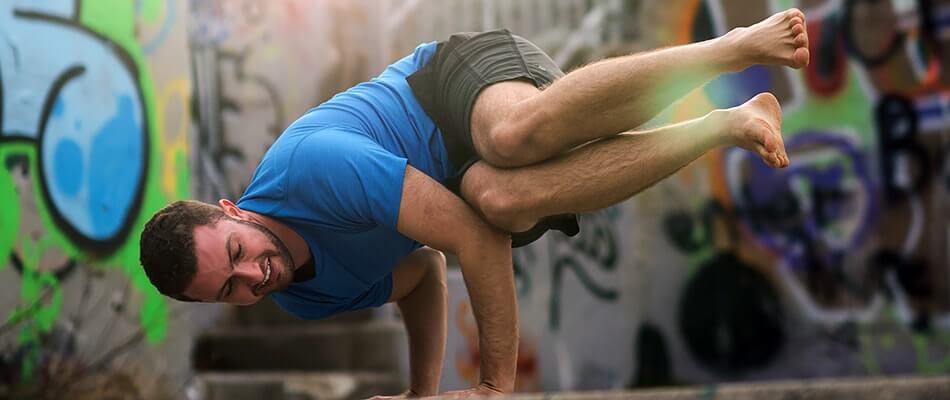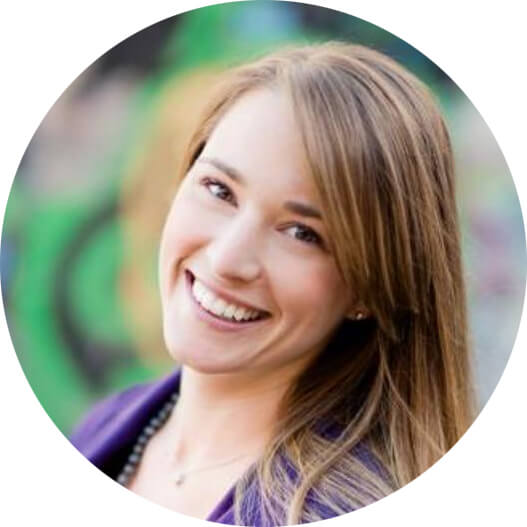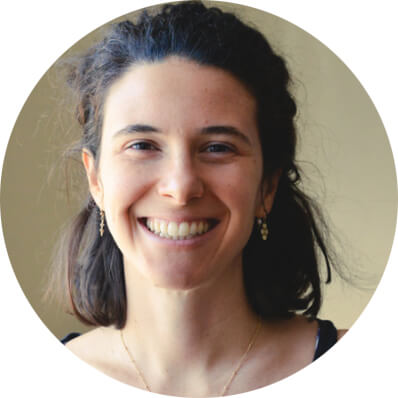Are you a new yoga teacher?
I’ve only been teaching consistently for a few years now, and lately I’ve been feeling like there’s so much more knowledge and experience that I don’t have that others do. Sure, you can only ever start from exactly where you are. I believe in teaching from what you know and have experienced yourself. That’s always more than enough to offer to others.
And yet, there’s a difference between teaching what you know and teaching what you aspire to know more fully.
So I reached out to some friends for their 76+ years’ worth of teaching experience to know what they’d do differently (and what they’d do again) if they were starting over in their teaching careers.
What did these talented teachers do right to begin their yoga teaching careers — that you can begin, today?
What wouldn’t they do again — so you can avoid a similar struggle?
And what ought they have done or tried sooner, that you can try yourself?
How 8 Yoga Teachers Would Start Over Today
 1. Coral Brown
1. Coral Brown
Coral is a globe-trotting yoga teacher based in Rhode Island who teaches, hosts retreats and trains dozens and dozens of yoga teachers across three continents. She’s a licensed therapist, a mom, and one of my best friends.
What is yoga to you? “The process of remembering that one’s true nature is whole and complete.”
Teaching for? 16 years
What Did You Do Right, Early?
“After teaching for 2 years, I took an entire year off of teaching and traveled to assist my teacher, Shiva Rea. I used this sabbatical to observe yoga in many different cultures, which helped me understand what it means to ‘live your yoga.’ When I got back to teaching, it was with a much more integrated sense of how to meet students where they are so that I could provide the highest level of service.”
What Should You Have Done Sooner?
“I wish I had started asking for help earlier!”
What Would You NOT Do Again?
“I led a retreat too soon. I was fresh out of teacher training and was asked to assist a yoga retreat, and didn’t ask any questions to help me understand what I was getting into. What I didn’t realize was that, to the facilitator who invited me along, ‘assisting’ meant I was co-leading! I didn’t have the experience necessary to hold the space to create a safe and sacred container for students. I managed, but yoga students deserve more than luck. People tell you to say yes to everything when you are first starting to teach. I think you can still say yes — but ask questions!”
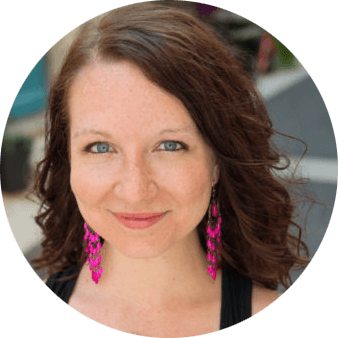 2. Kate Marolt
2. Kate Marolt
Kate is a coach, body shaman and yoga teacher based in Oakland, California, whom I met at a conference in 2015. We co-hosted a retreat together in Costa Rica in 2016, and are co-hosting another in Peru in 2018.
What is yoga to you? “Allowing all parts of me to be present and connected.”
Teaching for? 6 years
What Did You Do Right, Early?
“I took every training (and attended every workshop) I could! Learning from a bunch of different perspectives and lineages really helped me hone my specific style and points of view around teaching. It also really helped me understand bodies and how to teach to who is in the room, rather than just following a script.”
What Should You Have Done Sooner?
“Not try to be the perfect teacher, like avoiding teaching progressions and poses that I wasn’t ‘perfect’ at, myself! Turns out, when I finally let my students see my ‘imperfect’ versions of poses I was teaching to them, it gave them so much permission to be where they were, and brought a much more human aspect to my classes.”
What Would You NOT Do Again?
“I would not try to teach classes that were themed around Sanskrit words or yoga philosophies that I really didn’t understand beyond a super basic surface level 😂 You don’t need to be fancy or impress people. Just give them space to be in their bodies.”
3. Debbie Valois
In addition to being my first ever yoga teacher, Debbie is a local yoga legend in Rhode Island, an aerial acrobat, a former aerobics instructor, has amazing pink hair, and is a facilitator of Dr. Melody Moore’s Embody Love Project.
What is yoga to you? “Yoga to me has changed from first being about injury prevention, to becoming a new way to challenge my body, to now being a way to connect energetically to myself.”
Teaching for? 16 years
What Did You Do Right, Early?
“I started teaching right away, and still find that your confidence builds with experience. I also trained with as many teachers as I could… from ‘yoga famous’ teachers to those at local studios of various styles and energy levels. I feel it made the way my teaching style developed more well rounded.”
What Should You Have Done Sooner?
“I should say, to have gotten my 200-hour certification sooner (because I taught for about 7 years before I did), but I don’t regret the delay. By experiencing many other teachers, week-long trainings, and shorter immersions, I was able to find the teachings of Shiva Rea, who I really resonated with and who became my root teacher. I’m not sure I would have found her otherwise!”
What Would You NOT Do Again?
“Be careful about saying yes too much, because holding space for people is depleting. As much as you might be eager to teach as much as you possibly can, sometimes when there is too much on your plate, you mentally and physically may struggle to give all of your classes as much of your energy as you might like too. Burn out in teachers is a real thing.”
4. Stu Snyder
Stu is a Bhakti yogi, yoga teacher and CranioSacral therapist based in Pennslyvania. He’s one of the funniest guys I know — and a deeply devoted student of his yoga.
What is yoga to you? “Yoga is the path and the destination to happiness.”
Teaching for? 4 years.
What Did You Do Right, Early?
“When I started teaching yoga, I was very busy and energetically spent, so I’d put off planning a class until the last minute. Without a pre-planned practice, I learned very quickly to teach to who was in the room — modifying the practice to the group instead of trying to modify people to fit a sequence I was committed to. Having a loose framework and putting it together on-the-fly has been extremely helpful when taking last-minute sub opportunities. It goes without saying if you keep being the person a studio owner can rely on, you get more gigs.”
What Should You Have Done Sooner?
“I wish I’d have done more marketing of myself, my theories and my philosophies in the beginning – online, in local communities, and even in conversations with new people. I’m not big on self-promotion within a studio (telling a class about the other studios at which I was teaching – that just never felt right to me). So when I say marketing myself, I mean really embracing being a yoga teacher and keeping that in the forefront. ‘Success’ would have come a lot faster.”
What Would You NOT Do Again?
“Definitely balance the single-pay and pay-per-student. Financially and emotionally, it’s a way better solution. I did a bunch of pay per student classes in the beginning. It was nice to get the experience and my name on a schedule, but it was really soul-crushing to make $5 or $10 for every class.”
5. Jessie Dwiggins
Jessie is a widely respected Forrest Yoga teacher in Rhode Island who hosts Wild Wisdom teacher trainings, public speaking workshops for yoga teachers, and occasional mindful eating programs for yogis and non-yogis alike. She’s also the co-owner of Borealis Coffee Roasters in Riverside, Rhode Island with her husband Bryan.
What is yoga to you? “Yoga is the way that I reconnect to my instinctive wisdom, which influences all breath, movement, food, and relationship choices off the mat.”
Teaching for? 10 years.
What Did You Do Right, Early?
“Early in my teaching career, I said yes to every teaching and subbing opportunity that came my way. Any time a teacher with a prime time slot needed a sub, I was there. It showed consistency and willingness to support the community. Studios owners take notice of that.”
What Should You Have Done Sooner?
“After finishing teacher training, I thought I was hot stuff. I waltzed into my classes expecting them to be full and for me to have an instant ‘following.’ I remember being disheartened and frustrated that only two people were coming to my classes. Someone may have told me this, but I needed to come to the following realizations on my own:
- ‘I need to practice teaching just like I practice yoga. It will take time and as I feel more confident, I will attract students.’
- ‘If I give these two people a phenomenal private class, they will tell their friends and family and more will come.’ “
What Would You NOT Do Again?
“I left my corporate job to be a full-time yoga teacher. To make a living wage, you have to teach A LOT of classes — 17 was my magic number. That is too much! I did it for a time, but burned myself out. I evolved my business to include many other offerings to round out my income. I was able to reduce my classes to two a week. That way, I’m not spread as thin. I can give more attention to my sequences and my students. I would caution new teachers about taking on too much too fast, however; sometimes we need to experience things to learn from them.”
6. Bristol Maryott
Bristol is the owner of Jala Studio & Art in Providence, RI where I occasionally teach and practice. She’s an impressive yogi who travels, teaches and trains as far away as India and China, sharing her wealth of knowledge on yoga asana, mantra, philosophy and so much more.
What is yoga to you? “My teacher Sharon Gannon says yoga is your natural state, and I agree: it’s a method to connect to your Self.”
Teaching for? 13 years.
What Did You Do Right, Early?
“I taught a lot for free so that I got lots of practice with less pressure than a normal class. I also put my practice first and made sure I always practiced at least 5 times a week. I still do! Self-practice is the backbone of my teaching, and allows me to have first hand experience of what I’m offering to students.”
What Should You Have Done Sooner?
“I wish that I were better at marketing. I still wish that. It’s just not very easy for me but, owning a studio, I really need to improve at it.”
What Would You NOT Do Again?
“I recently taught a large class in Shanghai and they let in more students than the room could fit. I had to change my original plan, but even the alternative I offered turned out to be too advanced for too many students — and still, too many of them tried it! Everyone was okay, but it was a good wake up call for me to be extra cautious with students I don’t know as well as at home.”
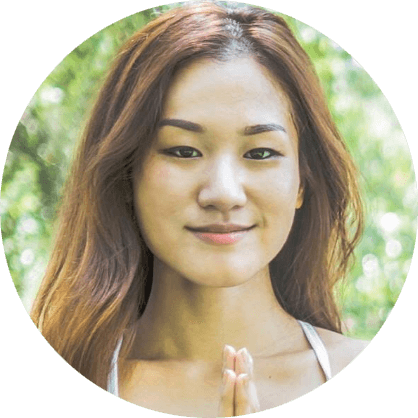 7. Sunny Koh
7. Sunny Koh
I met Sunny in Costa Rica when I was hosting a retreat at the eco-resort where she was then serving as the on-premises yoga teacher. She teaches in the Bay area and is also a talented photographer.
What is yoga to you? “A practice of living with mindfulness.”
Teaching for? 8 years.
What Did You Do Right, Early?
“I dealt with the excitement and nervousness of first starting to teach by planning ahead for my class, and remembering to be there for my students.”
What Should You Have Done Sooner?
“I wish I had learned to stop focusing on what I wasn’t doing as a yoga teacher and started bringing to light what it was that made me a great teacher. Pleasing people doesn’t serve anyone. Trying to become everyone’s best yoga teacher isn’t honoring what makes each teacher so unique and authentically wonderful. As teachers, we have our own wisdom and experiences that make each class special. Find what works for you and keep evolving in your own path as a teacher.”
What Would You NOT Do Again?
“Don’t worry about there being so many great yoga teachers and you not having enough experience. There is always something to be learned from every student or teacher you cross paths with! Remember to stay humble, be grateful and learn from every experience.”
 8. Dave Ursillo (that’s me!)
8. Dave Ursillo (that’s me!)
What is yoga to (me)? Yoga is bringing the Self into wholeness.
Teaching for? 3.5 years.
What Did [I] Do Right, Early?
“I was really deliberate in attending a lot of yoga classes around the same times of day that I would be teaching. This gave me insight around what kind of classes this group of students was already familiar with. Better yet, students at the studio began to know who I was! They were more comfortable coming to my class after having met me, rather than just from seeing an unfamilar name on the class schedule.”
What Should [I] Have Done Sooner?
“If anything, I wish I would have jumped into more teaching variety (privates, workshops, maybe a class at a second studio), to really explore all the different angles of what those environments felt like. When you’re so new, it’s a really special time, because even you are not really sure what you prefer and what you’re best at. There’s so much learning happening.”
What Would [I] NOT Do Again?
“I’m still guilty of going through stretches where I neglect my own personal practice, because there are only so many hours in the day to spend in the yoga studio. However, when I neglect my own practice I quickly realize that my teachings begin to feel flat and uninspired. My personal practice keeps a connection and awareness open to my body, how poses feel, and things like creative sequencing, and aids my intuitive ability to create new yoga experiences for students.”
In Conclusion…
Whether you’re just beginning after receiving your yoga teaching certification, or you still feel like a beginner in your own mind, one of the most valuable resources you have is turning to respected, experienced teachers for their wide range of insights and advice on what makes for a better teacher.
Never be afraid to reach out and ask for support!
And most of all, remember to always remain a student to yourself and to your own practice.
That is the fuel that keeps on providing you with something new and valuable to share with your own students.

P.S. — There’s 11 free poems for savasana that your students will love right here.
